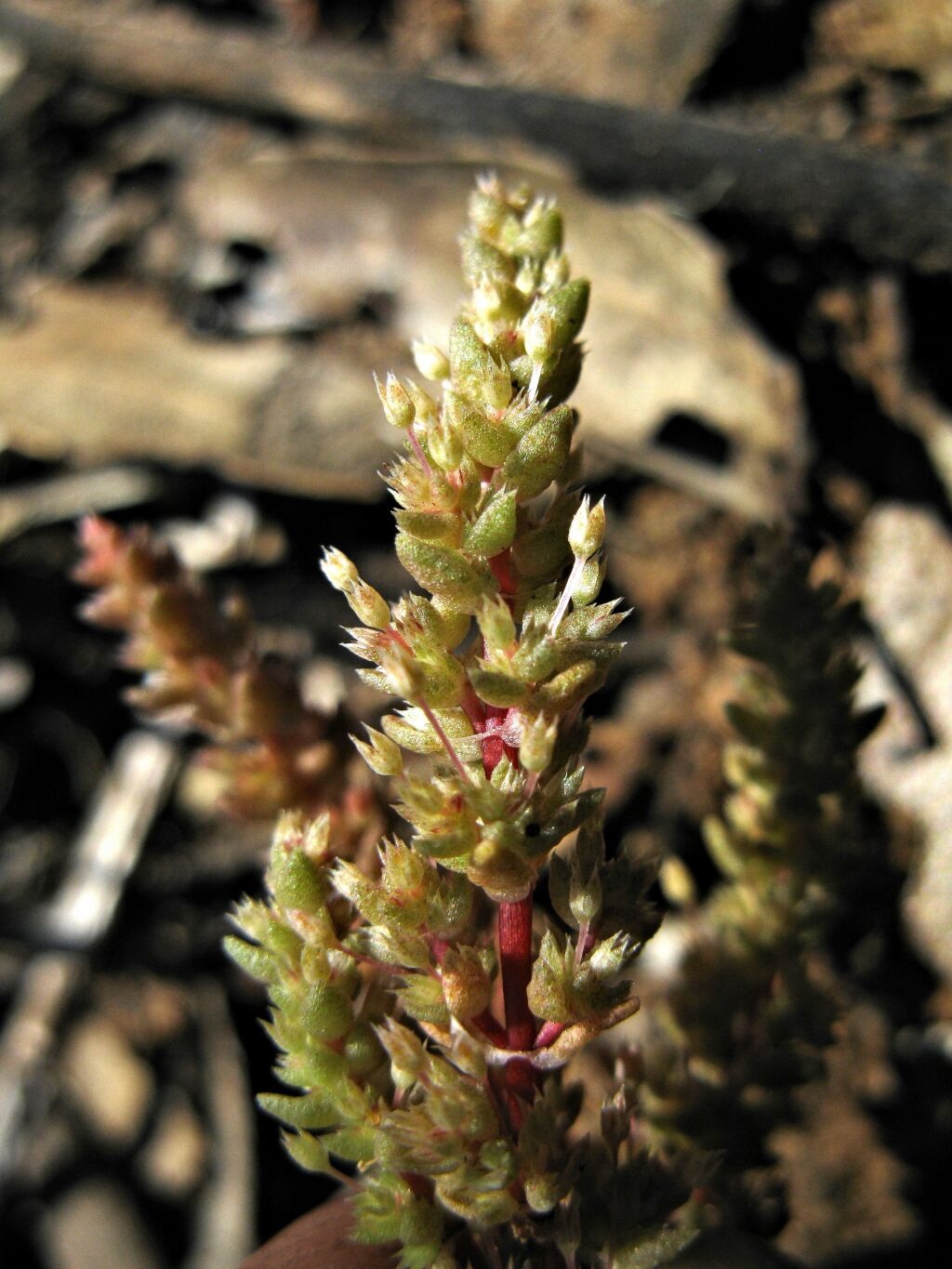Crassula tetramera
(Toelken) A.Druce & SykesDecumbent to prostrate annuals, branches up to 15 cm long, usually much-branched from basal nodes. Leaves linear-lanceolate, c. 2–3 mm long, 0.5–0.8 mm wide, obtuse to rounded, more or less flat above and convex below. Inflorescence 1-several spike-like thyrses with sessile cymules in axils of leaf-like bracts, often becoming pedicellate when fruiting. Flowers 4-merous; calyx lobes linear-lanceolate, 0.5–1.1 mm long, acute to pointed, erect in fruit; corolla cream tinged red, lobes ovate to lanceolate, 0.3–0.5 mm long, acuminate and folded lengthwise; nectary scales linear-cuneate to almost T-shaped, 0.4–0.6 mm long, 0.1–0.3 mm wide, usually truncate; carpels conical, with 2 ovules. Follicles bulging and papillose in lower half, releasing seeds through apical pore or detaching basally from receptacle; seeds c. 0.3 mm long, smooth, often shiny. Flowers Sep.–Jun., depending on rainy season.
LoM, MuM, Wim, VVP, VRiv, MuF, GipP, OtP, WaP, Gold, CVU, GGr, NIS, EGU, HSF, HNF, VAlp. Also WA, NT, SA, Qld, NSW, Tas. Largely confined to semi-arid regions, especially in the north-west of Victoria, growing in sandy soils or clay.
This species has previously been included in Crassula sieberiana, and sometimes treated together with C. colligata, as C. sieberiana subsp. tetramera Toelken. Crassula tetramera is distinguished from these two species by its much shorter calyx lobes and follicles that are distinctly wider in the lower half, apparently bulging around the lower seed. This species is not always readily distinguished from Crassula colligata subsp. lamprosperma, both having smooth often shiny seeds and somewhat papillose follicles.
 Spinning
Spinning


